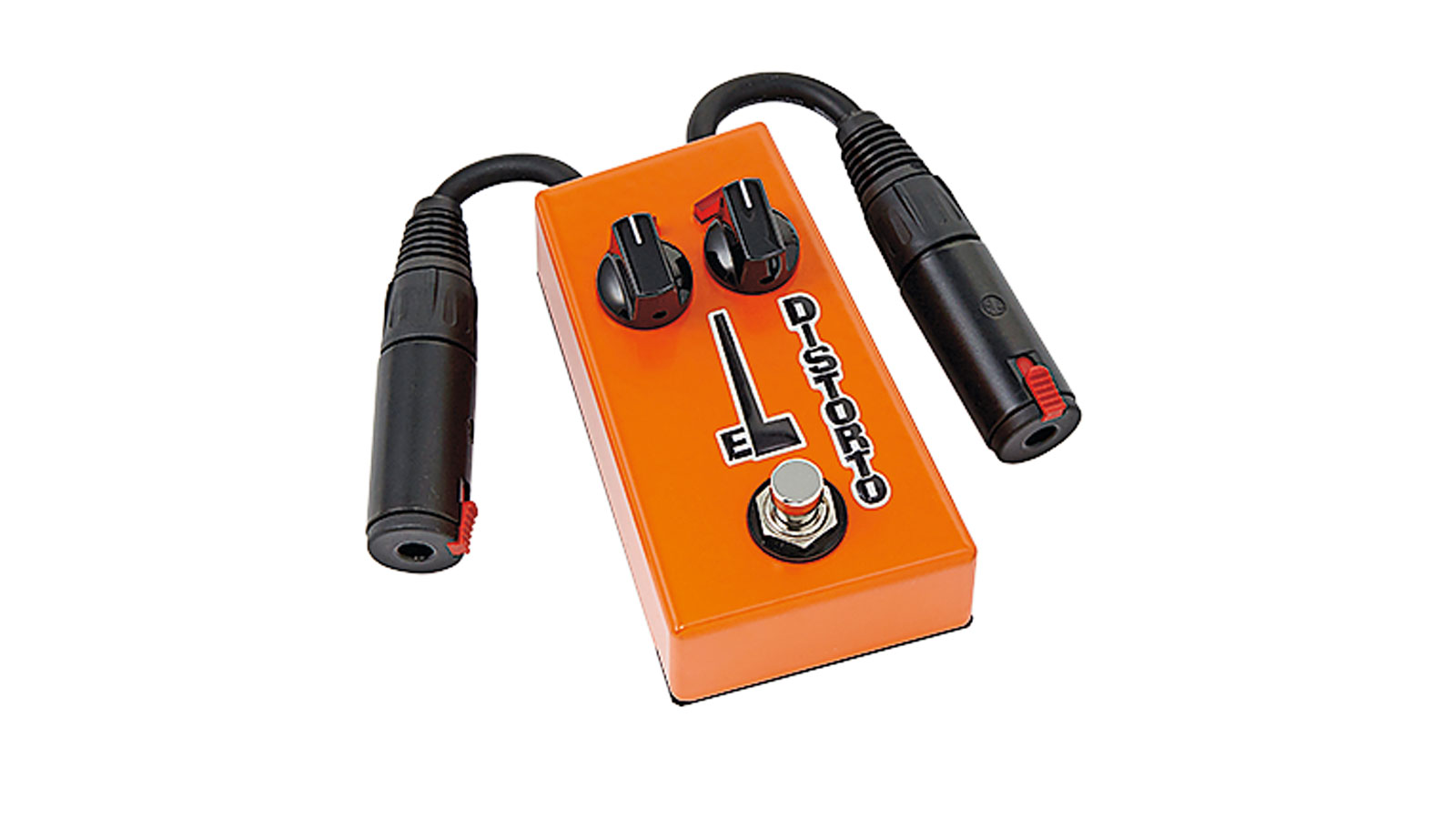MusicRadar Verdict
Two distinct distortion voices in one pedal.
Pros
- +
Nicely voiced overdrive and fuzz/distortion tones. Unique looks.
Cons
- -
Those Neutrik sockets might not be for everyone.
MusicRadar's got your back
Stand it on end and it looks like a cute cartoon alien, but Rainger FX El Distorto's 'ears/antennae' are locking Neutrik sockets for your jackplugs, as the design of the asymmetrical pedal leaves no place for conventional sockets.
"There's no tone control, but the pedal is very nicely voiced with an upper-mid presence that cuts through"
What we get is a silicon diode-based distortion pedal with drive and volume knobs, plus an extra switch on the base that destabilises an offset in the circuit. Without the offset, you are in fuzz/distortion borderland with solid overdrive at lower drive levels, gaining more of the fuzz character as you advance the knob.
There's no tone control, but the pedal is very nicely voiced with an upper-mid presence that cuts through. With the offset switch engaged, the sound gets fuzzier around the edges, with a phasey swimminess and an increase in harmonic content that makes you want to dig in for squealing high single notes.
The most conventional-sounding of Rainger FX's off-the-wall range, the El Distorto is a great dirtbox.
Trevor Curwen has played guitar for several decades – he's also mimed it on the UK's Top of the Pops. Much of his working life, though, has been spent behind the mixing desk, during which time he has built up a solid collection of the guitars, amps and pedals needed to cover just about any studio session. He writes pedal reviews for Guitarist and has contributed to Total Guitar, MusicRadar and Future Music among others.

Streaming, live performance, and direct-to-fan sales are on the rise: How to make money from music in 2025

“I was doing a gig, I dropped the pick, and I was drunk. I was afraid if I bent over to pick it up, I'd fall. So I played the rest of the show without the pick and started to really like it’”: What Jeff Beck told his friend Joe Perry

“I don't know how to do this. You would think I do, but it's not one of these things you ever know how to do”: Why Paul McCartney’s intuition-led attitude to songwriting is worth taking onboard
Most Popular









